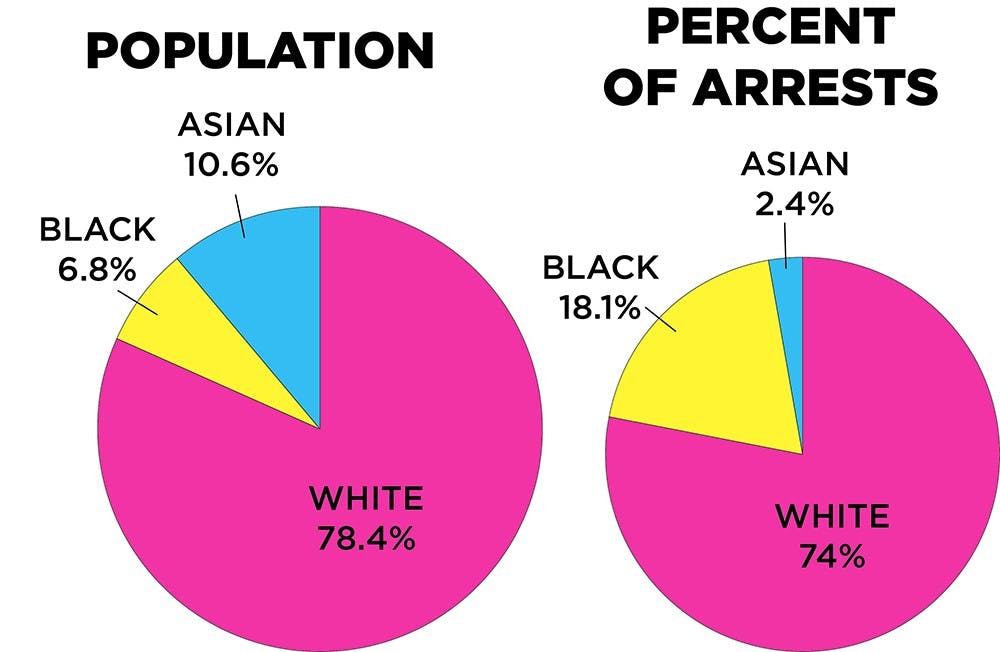While white people were arrested most often in East Lansing because of their high population, black people were arrested about twice as often compared to their population, newly released East Lansing police arrest demographics show.
After pressure befell the East Lansing Police Department following a series of protests by concerned citizens and students, ELPD released a master list of arrests categorized by race and gender dating back to 2010.
While much of the data is proportionate to population data gleaned from East Lansing’s 2013 census, some of the implications of the report have concerned members of the student-based Committee for the Oversight of Police Officers, who organized the protests and demanded changes to the police department.
According to the arrest summary, 74 percent of arrests made from 2010 to 2013 were of white people, which is on par with the population of white citizens in East Lansing — 78 percent . Although Asian people make up approximately 10.6 percent of the population, they add up to only 2.4 percent of arrests.
Inversely, black people make up 18.1 percent of arrests, nearly double their population percentage of 6.8 .
This disparity, Committee for the Oversight of Police Officers organizer Crystal Gause alleged, is the result of inherent biases in the policing system.
“While it might not be a conscious bias, it’s an epidemic that’s happening all across the United States,” she said. “It’s the result of a system structured to have prejudices against people of color.”
Gause said prejudices against people of color are pervasive and exist in most parts of society.
“This is systemic injustice,” Gause said. “It doesn’t just come from one police department or one police officer. It comes from a system that disenfranchises people of color.”
But not all of the black people arrested in East Lansing are city residents, East Lansing police Lt. Steve Gonzales said. The East Lansing census also doesn’t necessarily account for students, who often report residency in their hometowns.
“I think our arrests are proportional to what our population data shows,” Gonzales said. “You have to take into account that those arrests include people who come from out of town or are passing through and end up getting arrested.”
Both parties agree that reporting arrests by race is a valuable tool in addressing concerns about racial biases in police forces.
Gonzales said it’s important to keep those records accurate and available to anyone who wants access to them.
Additionally, Gause said keeping tabs on arrest demographics helps citizens to hold police departments responsible for any biases the data might show.
“It’s important to have these so (the police) can be held to some type of standard,” she said. “The outcome makes you wonder why and question the systems in place.”


